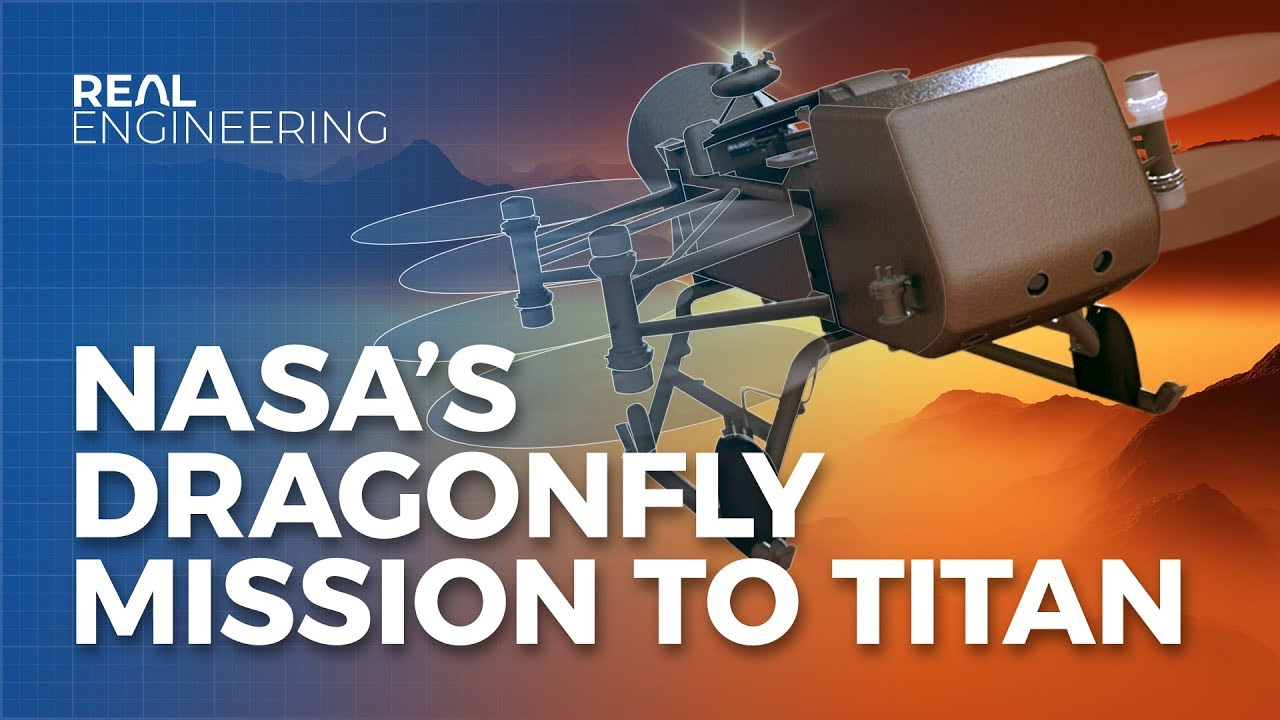





Copyright infringement not intended
Picture Courtesy: Real Engineering
Context: NASA's upcoming mission to Saturn's moon Titan, named Dragonfly, is set to be the most ambitious alien world exploration to date.
Key Highlights
|
Dragonfly Drone |
●Dragonfly is a nuclear-powered, car-sized drone designed to investigate the complex chemistry that could be a precursor to life. ●The mission aims to study how organic compounds form and determine if Titan, Saturn's moon, currently harbours or ever had life. ●Dragonfly is equipped with cameras, sensors, and samplers to examine Titan's dense nitrogen-rich atmosphere, believed to contain organic material that might have interacted with liquid water beneath its icy surface. |
|
Testing Dragonfly |
●Engineers conducted extensive tests in NASA Langley’s Subsonic and Transonic Tunnels to simulate Titan's unique atmospheric conditions. ●These tests helped refine Dragonfly's aerodynamic performance in the harsh conditions it will face during its mission on Titan. |
|
Titan's Unique Atmosphere |
●Titan's atmosphere is about four times denser than Earth's and primarily composed of nitrogen (about 95%) and methane (5%). ●Methane and nitrogen create a complex organic chemistry on Titan, making it fascinating for scientists. Certain carbon-based molecules, like cyclopropenylidene, have been found in Titan's atmosphere, suggesting the possibility of more complex compounds and potential signs of life. |
|
Similarities with Earth |
●Titan's surface features, such as rivers, lakes, and rocks, resemble Earth's, but with exotic traits. Lakes and rivers on Titan contain methane instead of water. ●The unique chemistry and the presence of liquid methane raise the possibility of exotic life forms existing in Titan's environment. |
|
Mission Timeline |
●Dragonfly is scheduled to launch around 2027. ●It is expected to reach Titan by the mid-2030s. |
|
Significance of Titan's Exploration |
●Titan's thick atmosphere and intriguing chemistry make it an ideal target for exploration, providing valuable insights into the origin of life in the universe. ●Studying Titan could reveal crucial information about the development of organic compounds and the potential for extraterrestrial life in our solar system. |
Conclusion
|
PRACTICE QUESTION Q. What is the primary goal of NASA's Dragonfly mission? A) To study the rings of Saturn B) To explore the surface of Earth's moon C) To search for signs of life on Mars D) To study the chemistry and geology of Saturn's moon Titan Answer: D Explanation: NASA's Dragonfly mission aims to study the chemistry and geology of Saturn's moon Titan, specifically focusing on the search for signs of life. |










© 2025 iasgyan. All right reserved